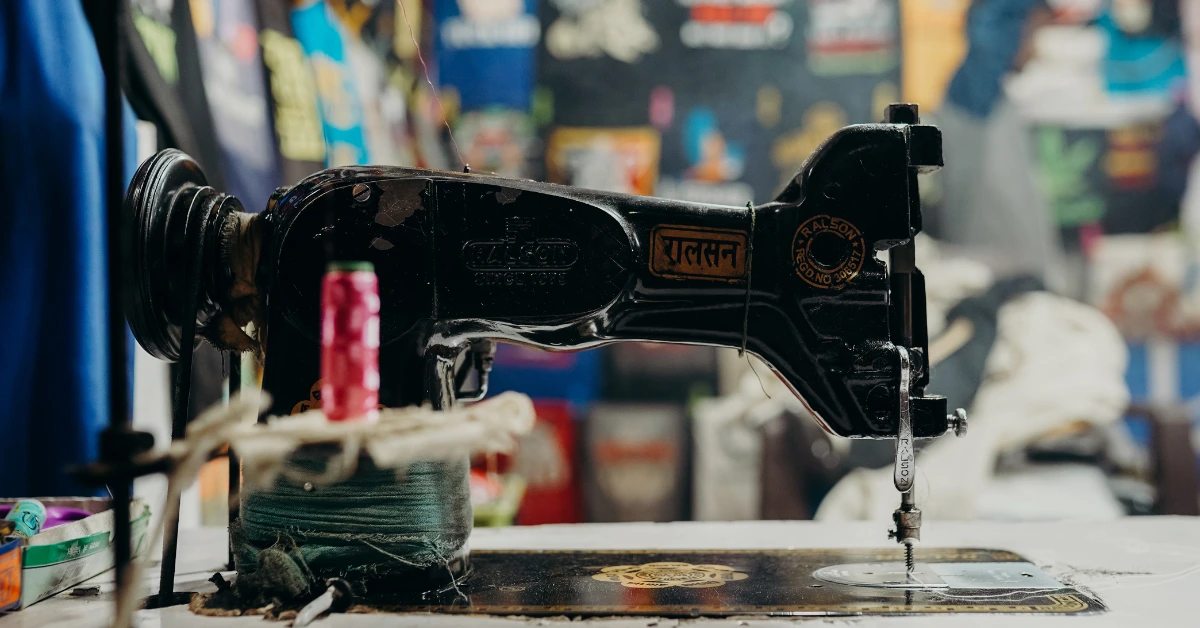Starting a Small-Scale Tailoring Unit

Starting a tailoring business is quite a good idea for people who want to start their entrepreneurial journey.
Compared to any other venture, this is a relatively practical and budget-friendly affair that loads up with possibilities.
In this guide, we’ll walk you through the setting up of your very small-scale tailoring unit even if you are starting off from home.
Key Insights for Small-Scale Tailoring
- The cost of Material and Labour has a huge impact on your production cost. Samples usually cost 2-5 times more than actual ones. For instance, if your t-shirt costs ₹300-₹400 to make it in bulk, the sample would be about ₹700-₹1400.
- The price of your garment will depend on factors such as the quality of the fabric used, design complexity, embroidery or printing, and whether the workers are fairly paid.
- India has some of the best manufacturers in the tailoring industry.
Keeping that in mind, let’s see how to get started.
Profit Potential
One of the most exciting prospects in setting up a small-scale tailoring unit is the profit potential.
Let’s break this down with some detailed examples and other factors that can affect your earnings.
Monthly production and sales
Assume you are producing 500 garments a month, and every garment costs ₹400 to produce, that is, from fabric to labour to various other materials.
You are selling your garments at ₹800 per piece. That means you are making a profit of ₹400 on each piece. So, you are looking at ₹2,00,000 in profit every month.
Scaling up
As your business grows, so can your monthly production.
Higher production often comes with cost efficiencies. Bulk purchases of fabric and materials can reduce your per-unit cost by 10-20%, which means your margins improve further.
Introducing premium designs
Adding premium or custom designs to your offerings can really increase profit considerably.
For example, a designer kurta, costing only ₹600 to make, can be sold for ₹1,500- earning a profit of ₹900 on every piece.
Selling even 100 such premium pieces adds ₹90,000 to your income.
Upselling and add-ons
You can provide additional services, such as embroidery, custom fitting, or matching accessories.
Charging ₹200-₹300 for each add-on with 300 products adds ₹60,000 to ₹90,000 more to your monthly sales.
Seasonal demand
Festivals and weddings are high seasons.
Preparations of the collection during these seasons therefore can pump up your earnings by 30-50%.
In order to reap the maximum, manage your costs, maintain quality, and diversify your range of products.
How to Begin a Small Tailoring Business from Home

One of the best ways is by starting a small tailoring business at home.
However, starting any business at home requires thoughtful planning and an organised strategy.
Let’s take some steps and look at how to start an effective home-based tailoring business.
Identify your niche
A niche is the market segment you want to concentrate on.
This is a very versatile business, and your success may depend more than anything else on identifying the right niche. Here are a few ideas:
Bridal wear: This is an attractive market, especially in India because weddings are grand affairs. Tailor-made bridal outfits have a good prospect of commanding high margins.
School uniforms: A fantastic steady all-year-round demand, if you can contract with schools throughout your area.
Kids clothes: Parents are always seeking the most comfortable, durable, and unique outfitting for their kids.
Eco-friendly clothing: With raised awareness about sustainability, eco-friendly as well as organic clothes are also on the acceptance list.
Conduct market research around you and understand what people demand.
You can make a quick survey around your friends, neighbours, or local community to find out what they want. After picking a niche, offer services that cater to those needs.
Improve your skills
Being a beginner, start by investing in knowing the basics first.
You can sign up for a tailoring course from any local institute available in your city that runs affordable classes covering stitching, pattern cutting, and design techniques.
There are simply many online tutorials available across YouTube and Udemy, both on the beginner as well as advanced levels.
Practice on simple projects. Begin by sewing some of the very basic things, like pillowcases or aprons, and simple dresses.
Even if one is talented, being updated with modern trends and techniques is essential.
For example, learning about the latest machines or available sustainable fabric choices will keep you in the lead in the market.
Get the Right Equipment
The type of equipment will depend on the size, but proper equipment is a must for any tailoring unit.
Straight-stitch Sewing Machine: it should at least be one but if one can afford it, then an all-rounder may also be considered. Good reliable options come under Usha and Brothers, its price range being between ₹8,000 to ₹25,000.
Overlock Machine: An overlock machine is applied to finish the raw edges of the garment and hence clothes a professional look. Overlock machines, mainly, cost between ₹5,000 to ₹15,000.
Cutting Tools: A couple of sharp fabric scissors, measuring tapes, pins, and markers are very necessary to make precise cuts and designs.
Iron and Pressing Board: These are quite necessary in giving your garments a polished, finished appearance.
Thread and Accessories: Stock up on various threads, buttons, zippers, and embellishments to cater to the varied needs of customers.
Though the investment for equipment ranges from ₹20,000 to ₹50,000 initially, this one is a one-time expense but a long-term money earner.
Pricing

Pricing directly determines your profitability, competitiveness, and customer retention. Here are the key elements of pricing:
Production costs
Materials: The price ranges from ₹50 per meter to ₹300, depending upon the quality and type (cotton, silk, synthetic). If purchased in bulk, this not only brings down cost but also ensures uniformity.
Labour: Your tailors are the lifeline of your business. On average, tailors charge ₹10,000 to ₹15,000 in a month, which varies according to one’s skill and location. With two tailors in the payroll, your labour cost for the month is around ₹20,000 to ₹30,000.
Overheads: Electricity, thread, buttons, zippers and the rent of a small workshop comes in another ₹5,000 to ₹10,000 of the monthly cost of doing business.
Suppose that you have spent ₹400 to manufacture a T-shirt.
The 50% profit margins would be returned to you if ₹800 price is charged, giving you space to invest elsewhere and go on growing.
Don’t forget sample costs
You will require samples on launching a new design for customers to look at.
An item that might cost ₹400 to mass-produce would cost ₹800 or even ₹1,200 as a sample because it takes more effort, fewer pieces are produced, and every detail is perfect.
Think of the samples; these will be an expense but also marketing tools to build trust with the buyer.
Adjust According to Market Conditions
Take a minute to consider what your customers will pay for and what everybody else in your industry is asking.
If it’s too high, they might go elsewhere. If it’s too low, then you definitely won’t be able to make a profit. A sweet spot balances affordability with value.
Price is a combination of proper calculation, knowledge of the market, and balance.
At the end of the day, it can set up your tailoring business for long-term success while covering all your costs.
Legal Essentials
GST Registration
If your annual turnover is more than ₹20 lakh, then you will have to seek GST registration.
That would enable you to lawfully collect tax plus input tax credit on your expenses, like fabrics or machines.
However, if you are planning to sell through Amazon or Flipkart, then you might find it is a necessity, so probably you should opt for it.
Trade License
Think of this as a bare minimum acceptance of your local municipal office to let you operate your business.
It’s pretty easy to get, costs little and ensures you’re complying with all local legislation around zoning and safety. That small step gives an absolute foundation to your business.
Expansion Permits
But if you were to move into a workshop or hire any kind of personnel you would need another permit such as a license to manufacture in the particular industry or labor compliance documents.
Handling these legal requirements early on saves you future headaches and builds confidence in your customers and partners.
And, of course, always better to do things the right way from the start!
Final Thoughts
Developing a small-scale tailoring unit would be one of the best ways to achieve the ever-growing demand for custom-made clothing.
Be it just a shop in a home or an expansion for a fully-fledged factory, any success factor would depend on an understanding of market needs; cost management; and above all, proper quality.
Disclaimer: The information contained in this blog, The Growth File, is intended for general informational purposes only and does not constitute professional advice. Always consult with a qualified professional before making any business decisions based on the information you find on this blog.
